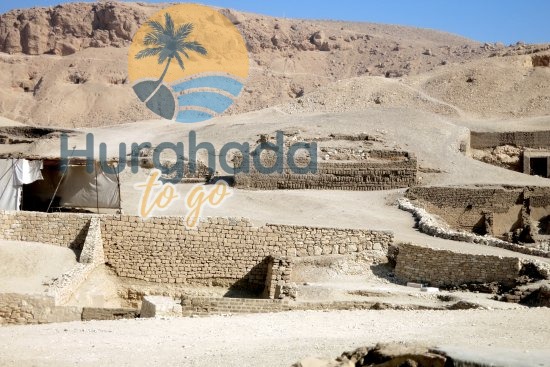The valley of the nobles in Luxor
The Valley of the Nobles in Luxor is a remarkable archaeological site that serves as the final resting place for over 500 Theban nobles and high officials from ancient Egypt. Among the most famous tombs are those of Ramose, Sennefer, and Menna. Each tomb is identified by a numbered system and adorned with beautifully preserved wall paintings that depict scenes of daily life, religious rituals, and the journey to the afterlife.
Tombs of the Nobles are a collective term applied to tombs of workers, foremen, priests, soldiers, officials, viziers, princes etc. usually located in the area of a major ancient site in Egypt.
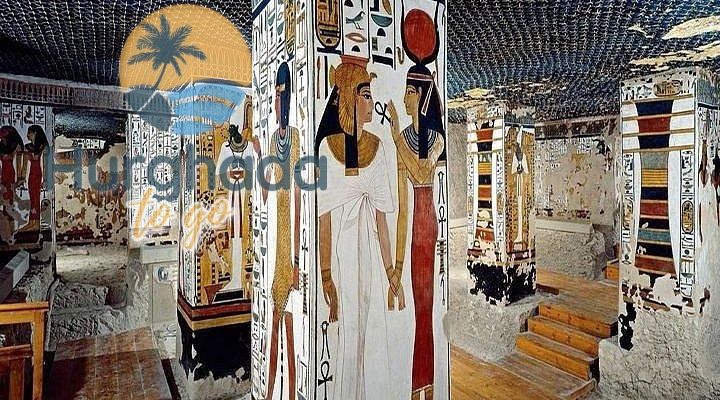
Discover the Fascinating Locations of the Tombs of Nobles in Egypt
- Tombs of the Nobles (Luxor) — a number of tomb-areas on the West Bank at modern Luxor (Ancient Thebes) is known collectively as the Tombs of the Nobles.
- Tombs of the Nobles (Saqqara) — a large number of royal and nonroyal tombs from the 1st and 2nd dynasty, Old Kingdom and New Kingdom.
- Tombs of the Nobles (Amarna) — The collective name for the South Tombs and North Tombs.
- Qubbet el-Hawa (Aswan) — a series of rock cut tombs, known sometimes as the Tombs of the Nobles.
When was the Valley of the Nobles built
The Valley of the Nobles in Luxor: Where Ancient Egypt’s Aristocracy Found Eternal Rest
Luxor, the open-air museum of Egypt, is home to some of the world’s most fascinating archaeological sites — places where history breathes through stone, paint, and silence. Among its many treasures stands The Valley of the Nobles in Luxor, a site that captures the human side of ancient Egypt’s grandeur. Unlike the colossal temples of Karnak or the royal tombs of the Valley of the Kings, the Valley of the Nobles offers a glimpse into the private lives, emotions, and beliefs of the men and women who served Egypt’s pharaohs — the elite scribes, governors, priests, architects, and artists of Thebes.
1. The Timeless Beauty of the Valley of the Nobles in Luxor
The Valley of the Nobles in Luxor lies on the west bank of the Nile River, directly across from the modern city of Luxor. This area, often called the city of the dead, houses hundreds of Tombs of nobles, dating mainly to the 18th, 19th, and 20th Dynasties of the New Kingdom (c. 1550–1070 BCE).
Here, more than 500 Theban tombs have been identified — each belonging to a person of high rank: officials who once walked alongside the pharaohs, managed the temples, or oversaw the building of monuments that still inspire awe today.
While the Valley of the Kings was reserved for the pharaohs and their direct kin, and the Valley of the Queens for royal consorts, the Valley of the Nobles was created for the most trusted members of the royal court — the ones who shaped the kingdom through intellect, art, and devotion.
What makes the Valley of the Nobles in Luxor unique is not just its scale, but its humanity. The murals and reliefs inside these tombs show scenes of everyday life — farmers harvesting grain, craftsmen carving statues, musicians playing harps, and noblemen sitting with their wives watching feasts or hunting in the marshes. These depictions reveal a deep appreciation for life and a strong belief in the continuity of the soul beyond death.
2. Architecture and Symbolism of the Tombs of Nobles
The Tombs of nobles in Luxor were not grand pyramids or massive underground labyrinths like those of the kings, but rather beautifully designed rock-cut tombs carved into the Theban hills. The architectural layout typically followed a pattern with two main chambers — the ceremonial hall and the burial chamber.
The larger ceremonial room was used for rituals honoring the deceased. It was often adorned with vibrant wall paintings that depicted offerings, banquets, religious ceremonies, and symbolic journeys through the afterlife. The smaller burial chamber usually contained a statue of the deceased and the sarcophagus, ensuring that the spirit — known as the Ka — could watch over the ceremonies and receive the offerings left by family members.
The Egyptian approach to tomb architecture was always guided by a deep respect for the afterlife. They believed that death was not the end, but a transition to eternity. The paintings, carvings, and inscriptions served both decorative and magical purposes — they helped guide the spirit through the afterlife and ensured the deceased’s eternal sustenance.
The artisans who worked on these Tombs of nobles were masters of color and perspective. Even after more than three millennia, the pigments remain remarkably bright — reds, blues, yellows, and greens that glow under the light of modern flashlights. The quality of preservation in the Valley of the Nobles in Luxor astonishes scholars and visitors alike.
3. Daily Life Scenes in the Valley of the Nobles
What truly sets the Valley of the Nobles apart from other necropolises is the focus on daily life. While royal tombs emphasize divine imagery and cosmic journeys, the tombs here show a more personal and earthly world.
The walls come alive with depictions of farming, fishing, weaving, and banqueting. You can see laborers plowing fields, scribes counting grain, women preparing food, and musicians playing harps while dancers twirl before elegant guests.
These scenes give us rare insight into the social and cultural life of ancient Thebes. They show that the Egyptian noble valued not only his faith and duty to the gods but also his family, music, and art.
Some tombs even depict the nobleman embracing his wife — an expression of tenderness rarely seen in other ancient cultures. These intimate details remind us that beyond their titles, the occupants of the Valley of the Nobles in Luxor were human beings with emotions, ambitions, and dreams.
4. The Tomb of Ramose (TT55): A Masterpiece of Transition
Among the many Tombs of nobles in Luxor, the Tomb of Ramose stands as a bridge between two worlds — the old Egyptian religious order and the revolutionary new faith of Akhenaten.
Ramose was a powerful Governor of Thebes and Vizier during the reign of Amenhotep III and Akhenaten (Amenhotep IV) in the 18th Dynasty. His tomb, numbered TT55, is one of the most famous and visited in the Valley of the Nobles.
The decorations in Ramose’s tomb reflect a fascinating transition in art and belief. On one wall, we see the classic Egyptian style of sharp reliefs and orderly compositions — typical of Amenhotep III’s reign. On the other side, we find scenes influenced by the new Amarna style introduced by Akhenaten, characterized by softer lines, natural postures, and a focus on the sun disk, Aten.
One of the most striking scenes shows Akhenaten and Queen Nefertiti offering gifts to Aten, their divine source of life. This tomb marks one of the earliest appearances of this new religious art — a revolutionary moment in Egypt’s artistic history.
Other walls in Ramose’s tomb depict funerary processions, mourning women, and priests performing rituals. The colors and compositions are so refined that Egyptologists consider this tomb one of the finest examples of New Kingdom art.
For visitors, stepping inside Ramose’s tomb is like walking through a gallery that tells the story of Egypt’s changing soul.
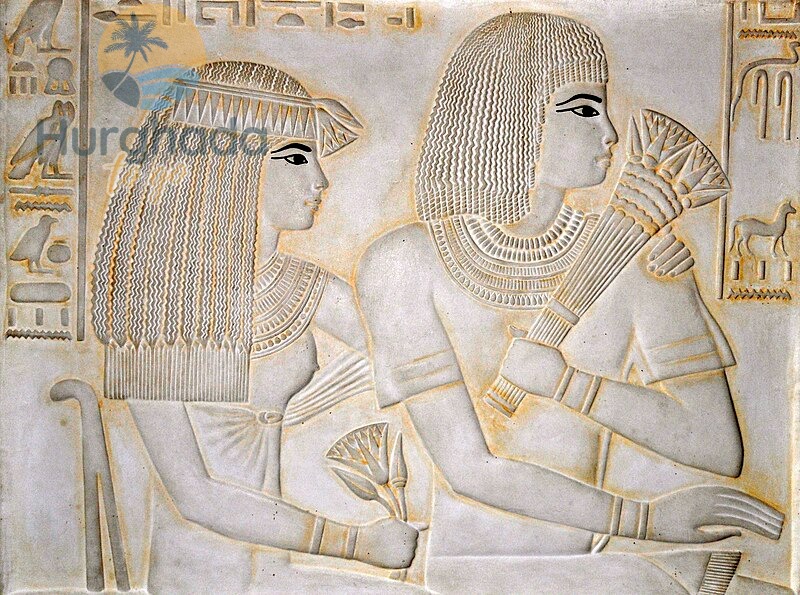
5. The Tomb of Sennefer (TT96): The Tomb of the Vines
Another jewel of the Valley of the Nobles in Luxor is the Tomb of Sennefer, also known as the “Tomb of the Vines.” Sennefer served as the Mayor of Thebes under Amenhotep II, and his tomb (TT96) is famous for its ceiling covered in painted grapevines — a symbol of abundance and eternal renewal.
The unusual undulating surface of the ceiling inspired the artists to create a three-dimensional illusion of vines hanging above the visitor. The paintings are vibrant, detailed, and almost playful — showing the skill and creativity of the ancient Egyptian craftsmen.
The tomb includes both a surface chapel (TT96A) and a subterranean burial chamber (TT96B), both beautifully decorated with scenes of Sennefer’s life, his family, and his funerary rituals. Despite being over 3,000 years old, the paintings retain much of their original brilliance, making this one of the most photogenic sites in the Valley of the Nobles.
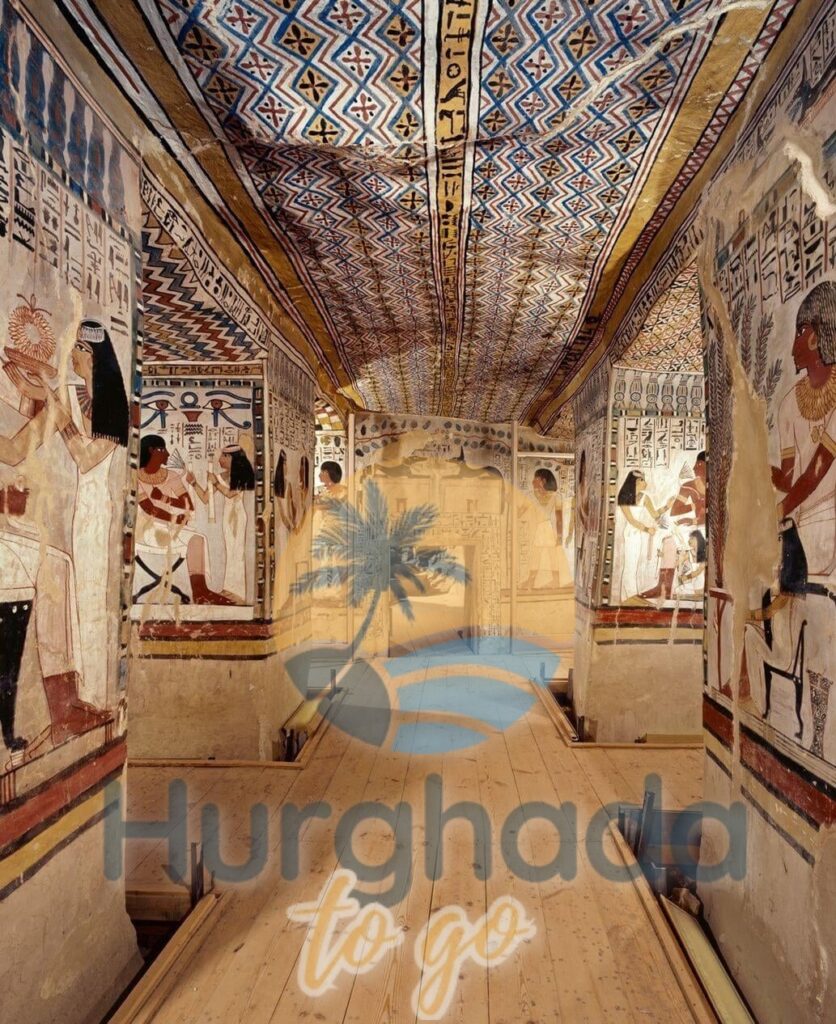
6. The Tomb of Rekhmire (TT100): The Life of a Vizier
The Tomb of Rekhmire (TT100) is one of the most historically valuable Tombs of nobles in Luxor. Rekhmire served as Vizier to both Thutmose III and Amenhotep II, holding one of the highest offices in Egypt’s administration.
His tomb is vast and intricately decorated with scenes illustrating the vizier’s responsibilities — from overseeing taxes and justice to managing craftsmen and foreign delegations. One particularly famous scene shows Rekhmire receiving tributes from Nubian, Syrian, and Aegean envoys. They bring exotic gifts like animals, ivory, and gold vessels — a visual record of Egypt’s global influence during the New Kingdom.
What makes Rekhmire’s tomb especially important is the long hieroglyphic inscription detailing the duties of a vizier — one of the most valuable administrative documents of ancient Egypt. Through these walls, we learn how Egypt’s bureaucracy operated, how laws were enforced, and how order was maintained.
Standing inside Rekhmire’s tomb, surrounded by scenes of diplomacy, labor, and worship, visitors feel as though they are stepping into the very heart of ancient Egyptian government.
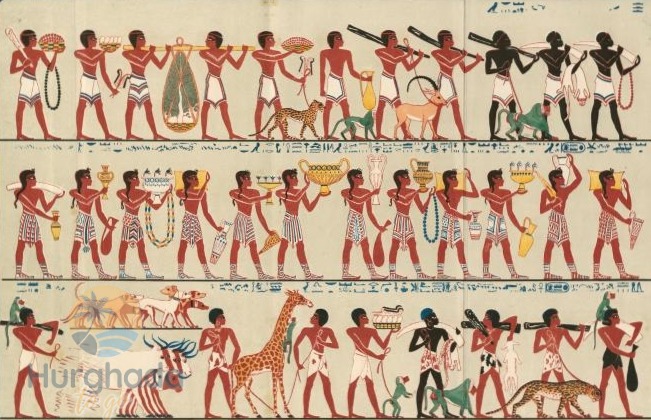
7. The Tomb of Nakht (TT52): The Astronomer and the Musician
The Tomb of Nakht is one of the most intimate and charming in the Valley of the Nobles in Luxor. Nakht was a scribe and astronomer who served in the Temple of Amun during the reign of Thutmose IV. His wife, Tawy, was a “chantress of Amun,” meaning she took part in temple music and rituals.
Although relatively small, the tomb of Nakht (TT52) bursts with color and life. The walls are adorned with vivid depictions of banquets, musicians, dancers, and scenes of agricultural work. The artistry captures both joy and serenity — reflecting the couple’s harmonious devotion to the gods and to each other.
Among the most famous images is one showing Nakht and Tawy sitting together before offerings, with musicians playing harps nearby — a timeless image of love and piety. This tomb is a favorite for photographers and art historians for its exquisite preservation and emotional warmth.
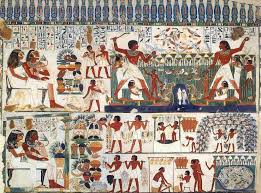
8. The Tomb of Menna (TT69): Life on the Fields of Eternity
Few Tombs of nobles in Luxor capture everyday life as beautifully as the Tomb of Menna. Menna served as a land surveyor and tax collector during the reign of Thutmose IV. His work was crucial to the kingdom’s economy, as he determined the amount of tax each farmer owed based on their harvest.
His tomb (TT69) features some of the most famous paintings in all of ancient Egyptian art. The walls depict Menna supervising farmers as they plow, sow, harvest, and winnow grain. Other scenes show fishing, fowling, and family gatherings — a rich tapestry of rural life along the Nile.
The artistry in Menna’s tomb reflects both realism and idealism. While the figures perform everyday tasks, they do so with elegance and rhythm, embodying the Egyptian ideal of “Ma’at” — harmony, order, and balance. The combination of vivid colors, graceful figures, and meticulous details make Menna’s tomb a highlight of any visit to the Valley of the Nobles in Luxor.
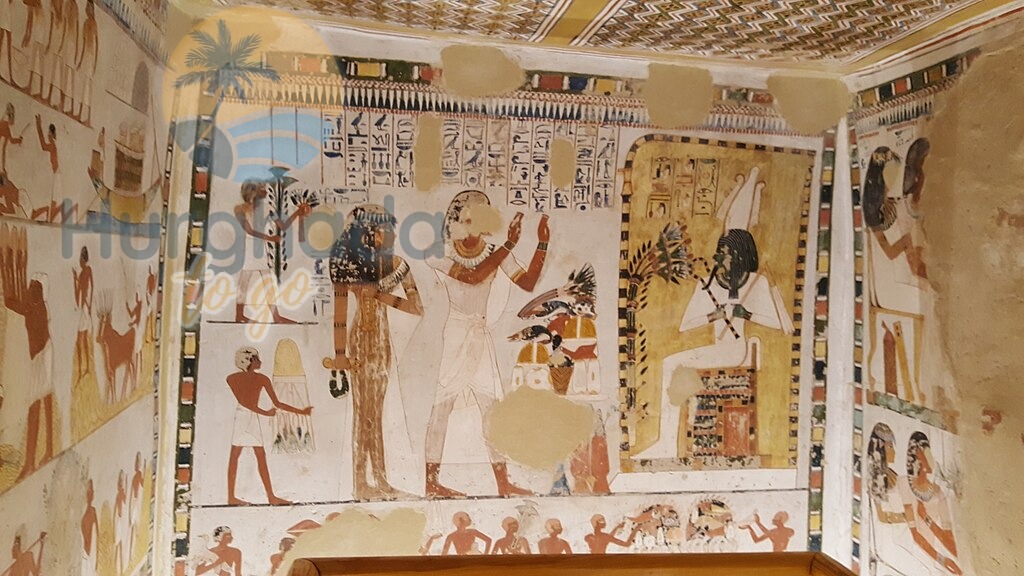
9. The Valley of the Nobles and the Amarna Artistic Revolution
One of the key contributions of the Valley of the Nobles to Egyptology is its evidence of the Amarna artistic revolution — a brief but transformative period during Akhenaten’s reign when art became more naturalistic and emotionally expressive.
In tombs like that of Ramose, we see the transition from rigid traditional forms to softer, more human depictions. Faces show emotion, bodies bend gracefully, and scenes reveal affection and family intimacy. This shift was a reflection of Akhenaten’s new religious vision centered on the sun disk Aten, emphasizing the warmth of divine light and the closeness of the royal family.
Thus, the Valley of the Nobles in Luxor serves not only as a cemetery but also as an artistic archive, documenting how Egyptian art evolved from formal idealism to expressive realism.
10. Visiting the Valley of the Nobles in Luxor Today
Today, the Valley of the Nobles in Luxor is open to visitors as part of many Luxor day tours and Nile cruise excursions. While not as famous as the Valley of the Kings, it offers a more peaceful and intimate experience. The tombs are smaller, less crowded, and often in better condition due to lower tourist traffic.
Visitors can explore several Tombs of nobles on a single visit. Some of the most recommended tombs include:
TT55 – Tomb of Ramose
TT69 – Tomb of Menna
TT96 – Tomb of Sennefer
TT100 – Tomb of Rekhmire
TT52 – Tomb of Nakht
Each tomb has a unique story, and local guides often bring them to life with fascinating explanations of the wall scenes, hieroglyphs, and symbolism.
The site is located near Sheikh Abd el-Qurna on Luxor’s west bank, close to the Valley of the Queens and Deir el-Bahari (Temple of Hatshepsut). Most visitors combine their trip to the Valley of the Nobles with other attractions on the west bank, such as Medinet Habu and the Colossi of Memnon.
11. Why the Valley of the Nobles Deserves More Attention
While the Valley of the Kings steals the spotlight, the Valley of the Nobles in Luxor offers something that even royal tombs cannot — an intimate look into the hearts of ancient Egyptians. Here, we see their laughter, work, music, and love. We witness their hopes for eternity, painted in colors that still glow after thousands of years.
For travelers seeking authentic ancient Egyptian art, this site is a treasure. For historians, it’s an open book revealing the structure of society and the values of an ancient civilization. For photographers, it’s a dream — every wall tells a story in color and light.
To walk through the Valley of the Nobles is to experience Egypt not through its kings, but through its people.
12. Travel Tips for Exploring the Valley of the Nobles in Luxor
Best Time to Visit: The ideal months are from October to April, when temperatures are cooler. Early morning visits are recommended to enjoy the site before it gets hot.
Tickets: Entrance tickets can be purchased at the site or included in guided tours. Some tombs require a separate ticket, as access rotates to protect the paintings.
Photography: Cameras are allowed in certain tombs, but flash is prohibited to protect the delicate pigments.
What to Bring: A hat, water, and comfortable shoes are essential. The site involves some walking between tomb entrances.
Guided Tours: Hiring a licensed Egyptologist guide enhances the experience. Guides explain not only the art but also the historical and religious context.
13. The Valley of the Nobles in Luxor – A Living Testament to Eternity
In the grand narrative of Egyptian history, kings and queens often dominate the headlines. But it is in the Valley of the Nobles that we find the pulse of ancient life — the artistry, intellect, and devotion of those who built the foundations of one of the world’s greatest civilizations.
From the Tomb of Ramose with its elegant Amarna art to the Tomb of Menna bursting with agricultural scenes, and the Tomb of Sennefer with its graceful vines, every chamber whispers a story of human faith and craftsmanship.
To visit the Valley of the Nobles in Luxor is to connect with that eternal human desire — to be remembered, to be seen, and to be celebrated beyond death.
It is a place where history speaks not through the roar of monuments, but through the quiet beauty of painted walls — walls that still glow with the colors of life.
Easy & Secure Booking
Reserve your unforgettable trips with HurghadaToGo:
🌐 Official Website: hurghadatogo.com
📧 Email: [email protected]
📱 WhatsApp: +201009255585

